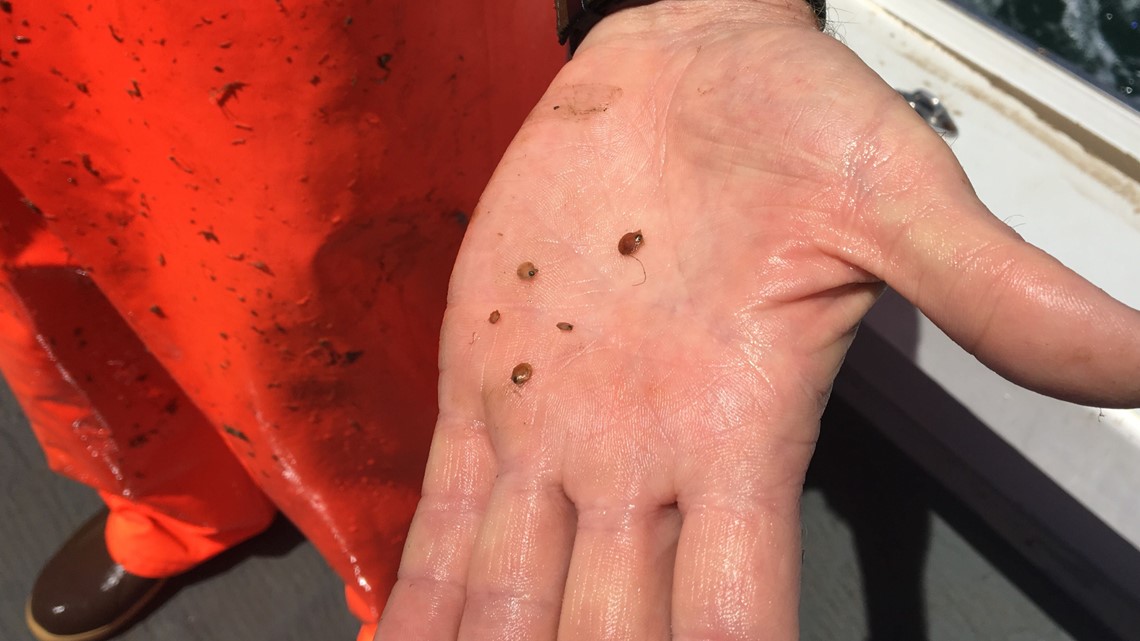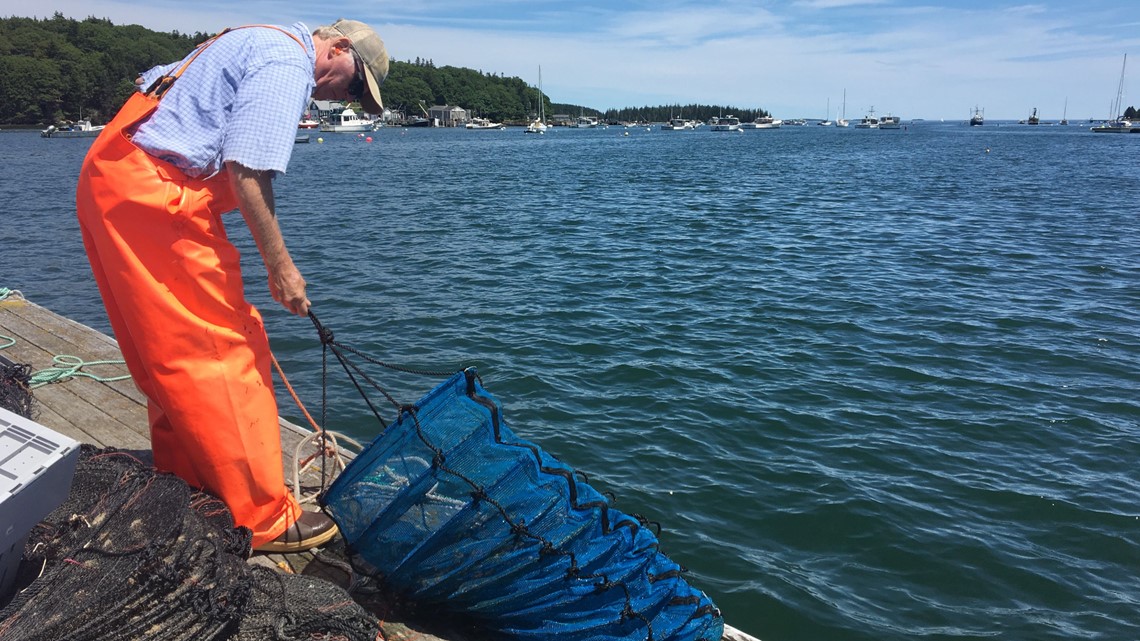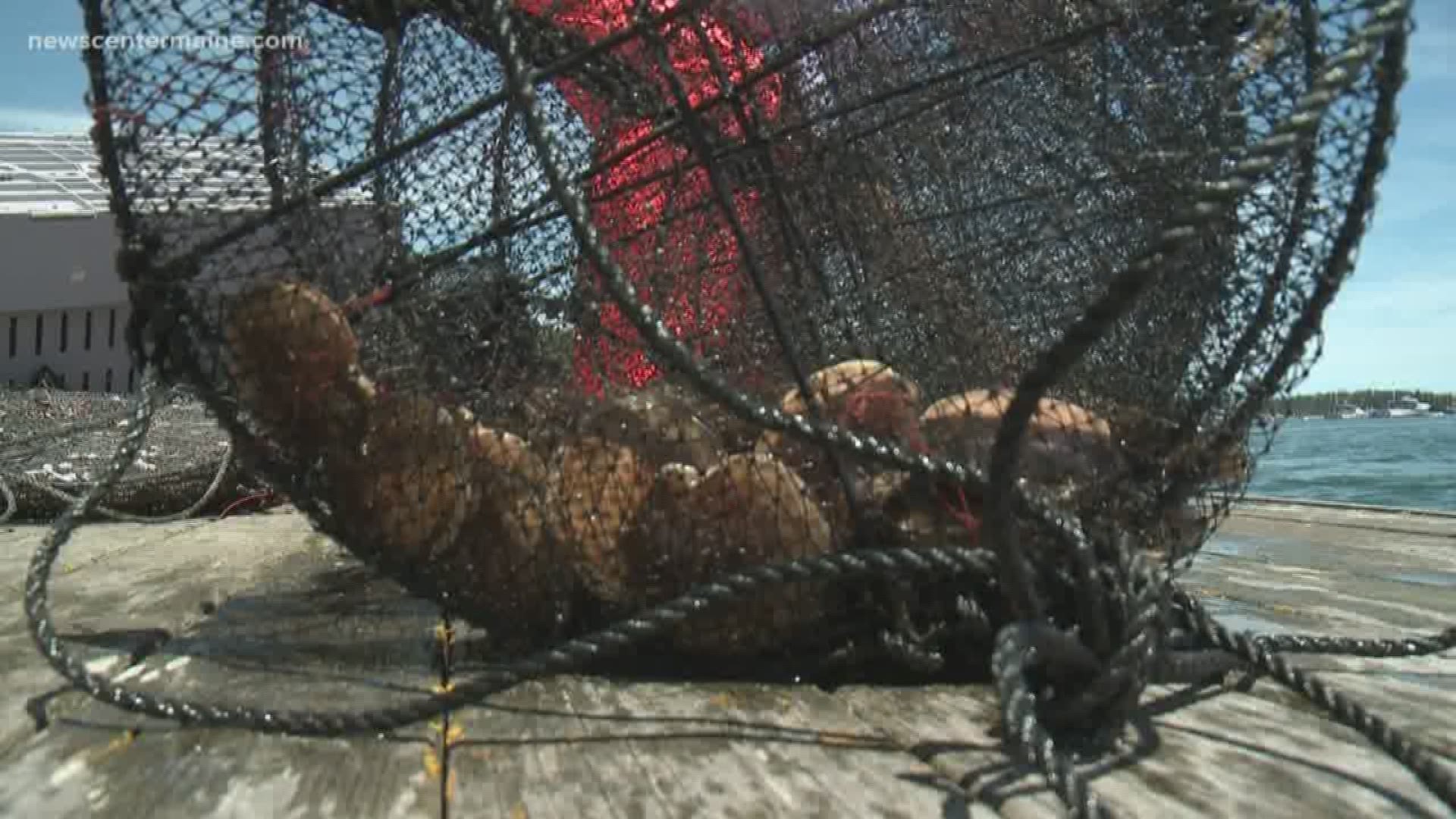ST GEORGE, Maine — The sky is clear and the sea is calm. It's the kind of summer day people would pay to be on the water. For lobstermen like Peter Miller, he's on the water in order to get paid.
“I used to be able to make money year-round. Now, [I] can’t do it,” he said.
Miller says the fisheries have changed off Maine's coast since he started in the industry decades ago and there are fewer opportunities for the next generation of fishermen to make a living.
"For young guys," he explained, "if you’re not lobstering or if you weren’t lucky enough to get a scallop license for wild-caught, there’s no shrimp season anymore, groundfish is all federally regulated."
Miller and others are taking matters into their own hands. Teeny, tiny matter, to be specific, with the hope they pay-off will be huge for their future.


"I’m hoping it will be an opportunity for a lobsterman, a young fella, to diversify and maybe make a little money."
He's talking about scallop farming, one part of a greater aquaculture industry taking off in Maine.
Miller is part of the Maine Aquaculture Co-Op which was created in 2016. A group of fishermen and aquaculturists united to share knowledge and ideas. But perhaps the most important thing they share, for financial reasons: equipment. It can be expensive, costing tens of thousands of dollars.
The co-op has a 4-acre farm off the coast of Tenants Harbor. But fishermen who belong to the co-op also operate their own farms off the coast of other places, like in Stonington for example.
“I just want to make sure there’s a way for people to continue to make a living on the water,” said Merritt Carey, a founding board member of the co-op. “We have to be very nimble with the changing climate and changing circumstances.”
She says aquaculture has the potential to play a great role in helping lobstermen and other fishermen diversify their income by way of farming kelp, mussels, oysters, or in this case, scallops.
Normally scallops are caught using a boat equipped with a dragnet from December-April. Only those larger than a certain size can be kept and sold.
With farming scallops, there are no rules regarding the size of scallops. Fishermen are also not limited to a set harvesting season and they can continue to fish or lobster simultaneously.
On our day off the coast of Tenants Harbor, Miller had wrapped up a regular morning tending to his lobster traps before he switched gears to farming scallops in the afternoon.
He showed us the process which begins with what's called collect spat. He sets spat bags at the bottom of the ocean in September when scallops typically spawn. The spat is what eventually becomes baby scallops.
By March or April, the spat starts looking scallops the size of a fingernail. At that point, the tiny scallops are transferred to lantern nets where they continue to grow. As they get bigger, they are transferred to larger lantern nets. Those nets are suspended under the water.


The scallops have to be tended to often, to make sure they have enough space to grow.
"It’s kind of a continuous cycle, particularly in the summer when they’re growing their fastest,” said Carey.
Wild scallops caught by dragnet are shucked on board before they are sold. With these farmed scallops, they can be sold whole and raw. To do so, they must undergo biotoxin testing.
“A lot of our work right now is educating consumers and chefs about what to do when they get these smaller, live scallops because it’s not what they’re used to when they think of scallops,” said Carey.
She explained they are sold per piece, similar to an oyster. Prices range anywhere from 85 cents per piece to a dollar.
Several local chefs have already shown interest in the scallops and the word's got out as far away as Chicago.
Currently, consumer demand for scallops is high and the value of the fishery continues to climb.
Miller says when it comes to farming scallops, they've seen a lot of failures so far while working out the process.
When asked, why go through all the hassle? His response:
“It’s been quite a while since I’ve done anything stupid so I was due,” he laughed. “It’s really diversification....If you don’t diversify, then what do you have?”


